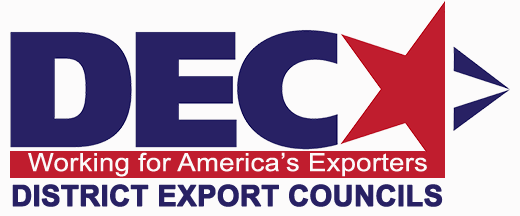A tariff or duty (the words are used interchangeably) is a tax levied by governments on the imported products, including freight and insurance. Tariffs vary with both product and country.

(Click here to access the Online Global Tariff Lookup Tool)
National sales and local taxes, and in some instances customs fees, will often be charged in addition to the tariff. The tariff, along with the other assessments, is collected at the time of customs clearance in the foreign port. Tariffs and taxes increase the cost of your product to the foreign buyer and may affect your competitiveness in the market. So knowing what the final cost to your buyer is can help you price your product for that market. In addition, your buyer may ask you to quote an estimate of these costs before making the purchase. This estimate can be made via email, phone or in the pro forma invoice.
Some countries have very high duties and taxes; some have relatively low duties and taxes. If your product is primarily made in the U.S. of U.S. originating components it may qualify for duty-free entry into countries with which the U.S. has a free trade agreement (FTA). We currently have FTAs with more than 20 countries. Targeting FThttp://export.gov/ftaA countries is a good market entry strategy because buyers pay less tariff for goods made in the U.S. compared with similar goods from countries without FTAs. Here are the steps for finding and calculating estimated tariffs and taxes. Keep in mind that what you get from this process is an estimate. Only the customs officers in the country where the goods clear can make the final determination.
Step 1: Determine your HS or Schedule B Number
The first step in determining duty and tax information is to identify the product classification number, i.e. Harmonized System or Schedule B number for your product(s). More importantly, your goods won’t ship without this number on key shipping documents.
The Census Bureau sponsors a free online tool called the Schedule B Search Engine and an instructional video to help you classify your products:
If after viewing these learning aids you remain unsure of the best HS number for your product, you can phone U.S. Government commodity classification experts at 1-800-549-0595, option 2.
Step 2: Determine Tariff Rates
Once you know your product’s 10 digit Schedule B number, use the first six digits as the HS number. Now you can determine your product’s applicable tariff and tax rates for a specific foreign country you are shipping to from the United States. A great place to start is the Customs Info Online Global Tariff Tool .
Public tariff resources: (free, some require registration)
Below is a list of publicly available databases with tariff and tax information. In general, these are the tariff and tax books published by each country’s government that list tariff (duty) rates by each product’s HS code. We try to acquire the most recent publication.
Your shipper, broker or a freight forwarder should be able to assist you with your search. To locate a shipper, you may want to contact FedEx, UPS or other vendors that would help you locate duty and taxes including Shippers Associations and the National Customs Brokers and Freight Forwarders Associations.
Most commonly used tariff schedules
- Canada (Chapter-by-Chapter Customs Tariff)
- European Union Tariffs (TARIC) (use tariff rates listed under “Erga Omnes”)
Austria, Belgium, Bulgaria, Croatia, Cyprus, Czech Republic, Denmark, Estonia, Finland, France, Germany, Greece, Hungary, Ireland, Italy, Latvia, Lithuania, Luxembourg, Malta, Netherlands, Poland Portugal, Romania, Slovakia, Slovenia, Spain, Sweden, United Kingdom.
- FTA Tariff Tool
- India
- Mexico
Tarrif look up in Spanish: To locate duties and taxes for exports to Mexico click on “Aranceles y normatividad”. The search result will include duty (Arancel) and VAT tax (IVA). Be sure to use the duties and taxes listed under “Importation”, i.e. imports TO Mexico. - Value Added Taxes
Other useful public resources
- Customs Info Online Global Tariff Tool – Start here first!
- Country specific tariff resources
- Agricultural Exports Tariff Tracker
- Asia-Pacific Economic Cooperation
Australia, Brunei Darussalam, Canada, Chile, China, Hong Kong, Indonesia, Japan, Korea, Mexico, New Zealand, Peru, the Philippines, Papua New Guinea, Singapore, Taiwan (Chinese Taipei), United States - Common Market for Eastern and Southern Africa (COMESA)
Angola, Burundi, Comoros, Democratic Republic of the Congo, Djibouti, Egypt, Eritrea, Ethiopia, Kenya, Madagascar, Malawi, Mauritius, Namibia, Rwanda, Seychelles, Sudan, Swaziland, Uganda, Zambia and Zimbabwe - Inter -American Development Bank
- South Africa Customs Union (SACU)
Botswana, Lesotho, Namibia, South Africa, and Swaziland - U.S. Territories
- Export Information by Industry
- WTO Tariff Database
